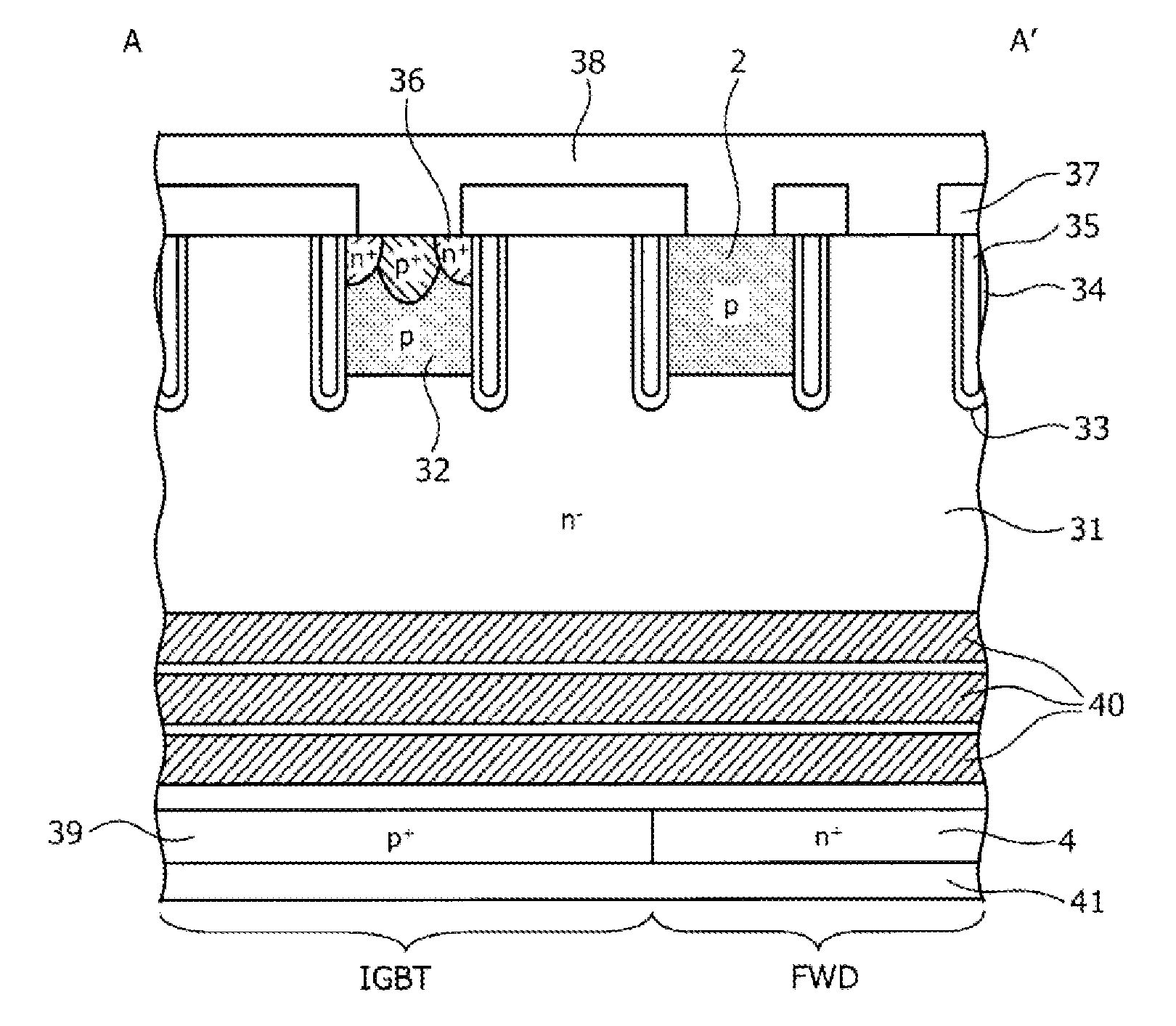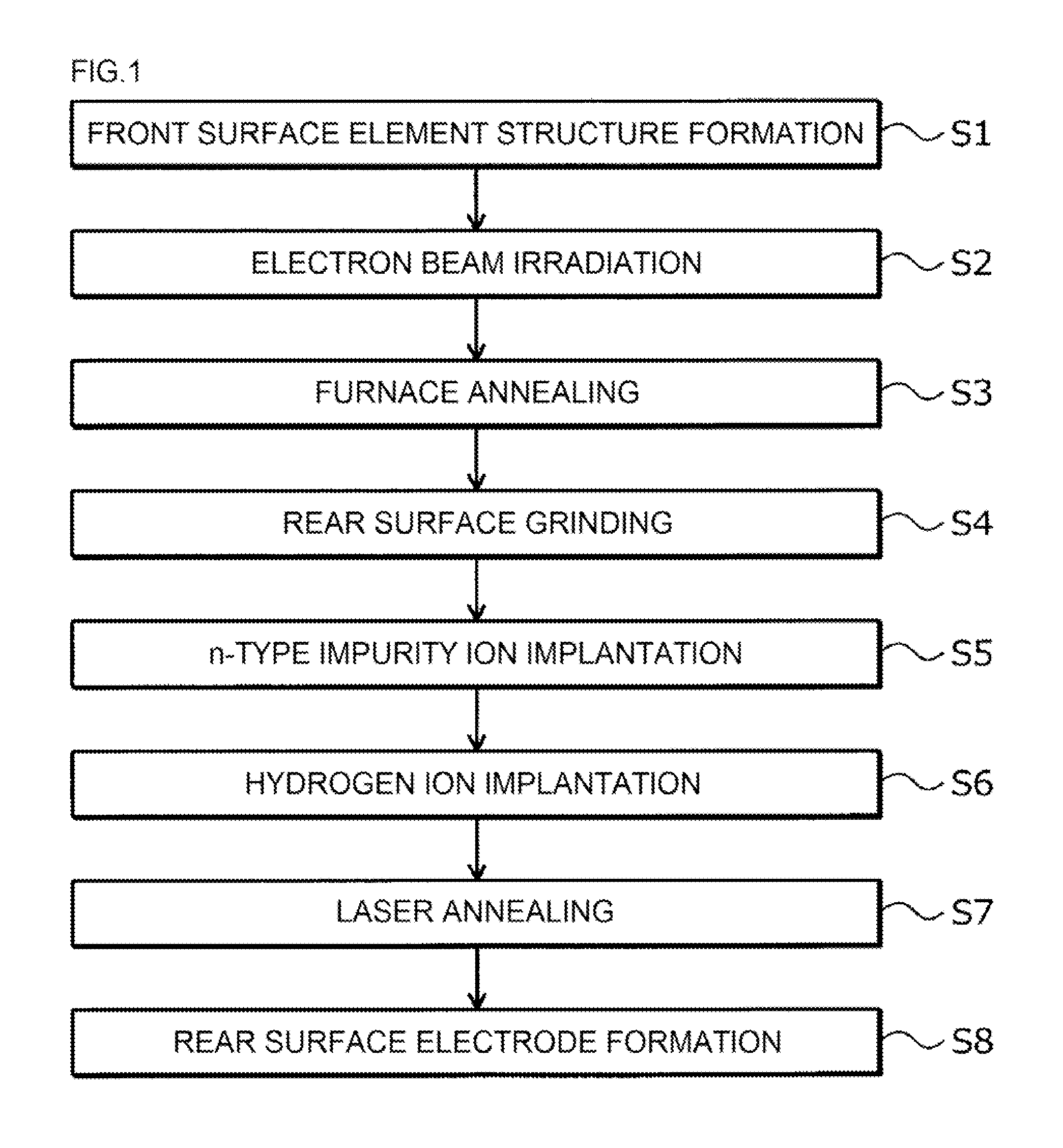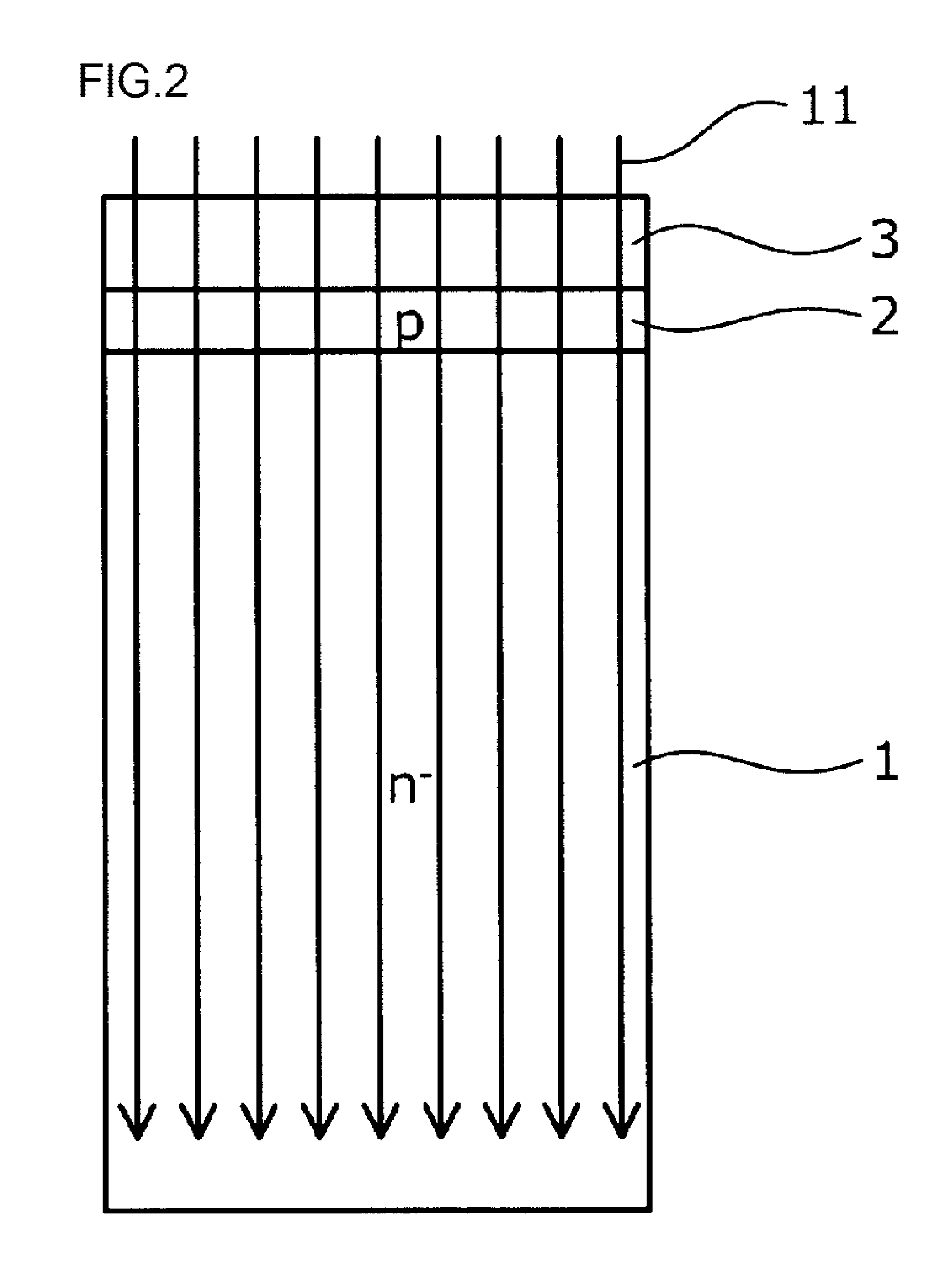Semiconductor device and semiconductor device manufacturing method
a semiconductor device and semiconductor technology, applied in the direction of semiconductor devices, electrical equipment, transistors, etc., can solve the problems of increased manufacturing cost, increased leak current, and high cost of light ion irradiation devices, so as to achieve low cost and local control of carrier life, the effect of not increasing leak current or contaminating the manufacturing lin
- Summary
- Abstract
- Description
- Claims
- Application Information
AI Technical Summary
Benefits of technology
Problems solved by technology
Method used
Image
Examples
embodiment 1
[0065]A semiconductor device manufacturing method according to Embodiment 1 will be described using an example of fabricating (manufacturing) a pin diode. FIG. 1 is a flow chart depicting an overview of the semiconductor device manufacturing method according to Embodiment 1. FIG. 2 to FIG. 7 are cross-sectional views depicting a state during manufacturing the semiconductor according to Embodiment 1. FIG. 8A and FIG. 8B are characteristic diagrams depicting an impurity concentration distribution of the semiconductor device according to Embodiment 1. First, a front surface element structure constituted by a p-type anode layer 2, an anode electrode 3, a terminal withstand voltage structure (not illustrated), and a passivation film (not illustrated) is formed on the front surface side of an n-type semiconductor substrate to be an n−-type drift layer 1 (step S1). In concrete terms, a p-type layer to be a p-type anode layer 2 and a p-type layer to be a guard ring constituting the terminal...
embodiment 2
[0081]A semiconductor device manufacturing method according to Embodiment 2 will be described using an example of fabricating a pin diode, which includes an n-type field stop (FS) layer constituted by a hydrogen inducing donor, inside the n−-type drift layer. FIG. 11 is a flow chart depicting an overview of the semiconductor device manufacturing method according to Embodiment 2. FIG. 12A and FIG. 12B are characteristic diagrams depicting an impurity concentration distribution of the semiconductor device according to Embodiment 2. A difference of the semiconductor device manufacturing method according to Embodiment 2 from the semiconductor device manufacturing method according to Embodiment 1 is that the implantation depth of the hydrogen ion implantation from the substrate rear surface is made deeper than the penetration depth of the laser from the substrate rear surface in the laser annealing for activating the n+-type cathode layer 4.
[0082]First, a front surface element structure ...
embodiment 3
[0090]A semiconductor device manufacturing method according to Embodiment 3 will be described next. FIG. 13 is a flow chart depicting an overview of the semiconductor device manufacturing method according to Embodiment 3. A difference of the semiconductor device manufacturing method according to Embodiment 3 from the semiconductor device manufacturing method according to Embodiment 1 is that the electron beam irradiation and the furnace annealing are performed after the laser annealing. The semiconductor device manufacturing method according to Embodiment 3 is useful when defects are formed in a shallow region, such as 3 μm or less from the substrate rear side, by the hydrogen ion implantation (e.g. a case of fabricating a pin diode which does not include an FS layer).
[0091]In concrete terms, in the same manner as in Embodiment 1, the front surface element structure is formed (step S21). Then the rear surface grinding (step S22), the hydrogen ion implantation (step S23), the n-type ...
PUM
 Login to View More
Login to View More Abstract
Description
Claims
Application Information
 Login to View More
Login to View More - R&D
- Intellectual Property
- Life Sciences
- Materials
- Tech Scout
- Unparalleled Data Quality
- Higher Quality Content
- 60% Fewer Hallucinations
Browse by: Latest US Patents, China's latest patents, Technical Efficacy Thesaurus, Application Domain, Technology Topic, Popular Technical Reports.
© 2025 PatSnap. All rights reserved.Legal|Privacy policy|Modern Slavery Act Transparency Statement|Sitemap|About US| Contact US: help@patsnap.com



